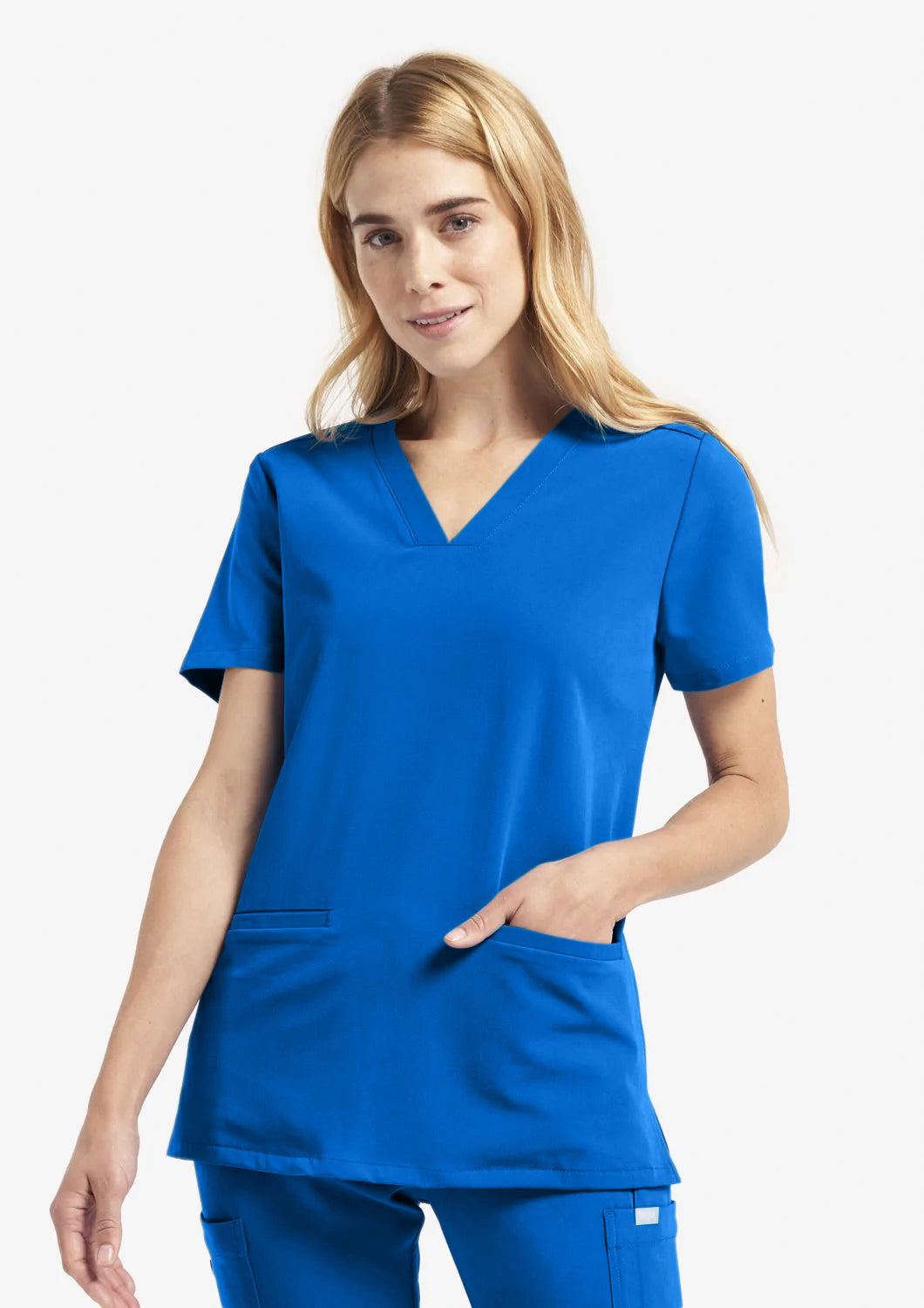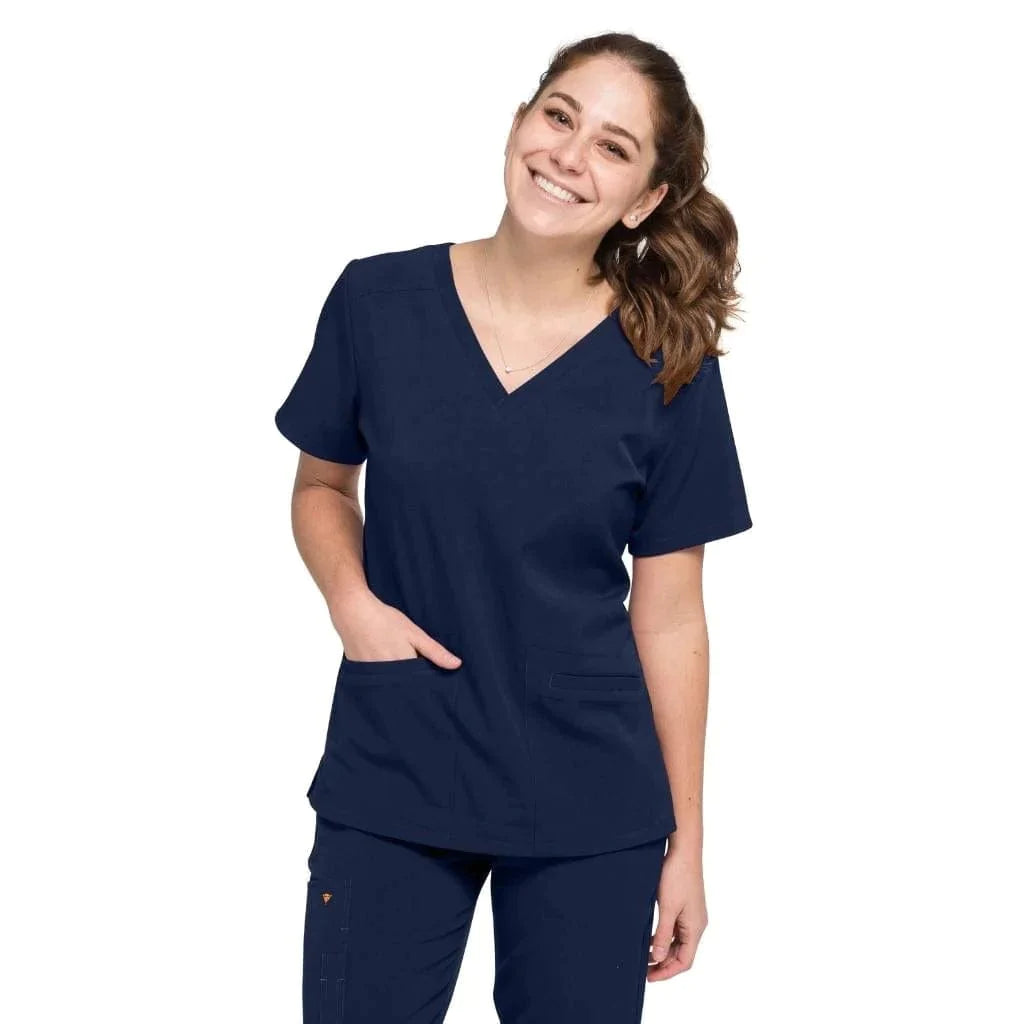Recognizing Why Scrubs Are Important for Security and Health in Medication
Designed with antimicrobial homes and fluid-repellent products, scrubs play an essential role in reducing the risk of pathogen transmission in healthcare setups. What specifically makes scrubs crucial in today's health care atmosphere?
Function of Scrubs in Infection Control
In the high-stakes setting of medical care, scrubs act as a crucial obstacle in infection control procedures. These garments are created to decrease the danger of sending virus in between individuals and doctor, thus playing an important duty in keeping a clean and sterile setting. The textile of scrubs is commonly made from products that are immune to fluid penetration, successfully avoiding the absorption of bodily fluids that could harbor contagious representatives.
In addition, scrubs are commonly laundered at high temperature levels, guaranteeing that any type of pollutants are eliminated prior to being worn once again. This regular cleansing is vital in protecting against cross-contamination in clinical setups, where the threat of infection is enhanced due to the closeness of people and the nature of medical treatments. Additionally, scrubs can be color-coded or patterned to recognize different departments or duties within a healthcare center, which helps enhance client treatment while likewise strengthening infection control procedures.
Additionally, the design of scrubs, including their loosened fit and easy-to-remove nature, assists in quick changes in situation of exposure to impurities (Scrubs Uniform). In general, using scrubs is an important element of infection control methods, guaranteeing the safety and security and well-being of both clients and health care employees

Layout Features Enhancing Security
While the main function of scrubs is to give a barrier versus infection, their layout features are similarly essential in improving the safety and security of doctor. Modern scrubs are crafted not only for comfort and wheelchair yet likewise with particular attributes that mitigate threats linked with clinical settings.
One considerable style feature is making use of antimicrobial textiles, which inhibit the development of bacteria and decrease the threat of cross-contamination. Furthermore, scrubs typically integrate fluid-repellent products, providing defense versus spills of physical fluids that can position health and wellness risks.
Moreover, the fit and construction of scrubs are designed to minimize entrapment dangers. Attributes such as adjustable ties and flexible cuffs safeguard the garment, preventing it from conflicting with medical procedures or equipment. Pocket positionings are purposefully thought about to guarantee necessary tools are conveniently available, minimizing the demand for too much motion that might bring about accidents.
Lastly, unique or intense patterns and shades boost exposure in hectic professional setups, permitting for fast recognition of medical employees. Jointly, these style includes make certain that scrubs not only serve as a safety obstacle but likewise promote a secure functioning setting for doctor.

Effect On Individual Results
The role of scrubs prolongs beyond the protection of healthcare providers; they significantly influence patient end results. Making use of tidy, ideal scrubs aids reduce the risk of healthcare-associated infections (HAIs), which are vital determinants of client healing and general health. Research studies suggest that the chance of infection diminishes when health care professionals follow strict hygiene procedures, consisting of the using of assigned scrubs.
Additionally, scrubs are created to be conveniently laundered and preserved, guaranteeing that health care employees offer themselves in a continually sterilized fashion. This not just promotes a sanitary atmosphere yet also cultivates patient confidence in the treatment they get. When patients observe that clinical team follow security criteria, it can favorably impact their psychological health and complete satisfaction with the health care experience.
Furthermore, the useful style of scrubs enhances mobility and convenience for doctor, permitting them to perform jobs efficiently and with precision. This performance can bring about quicker response times and boosted client care, ultimately reflecting in far better wellness end results. The choice and upkeep of scrubs are important to recommended you read the more comprehensive structure of client safety and security and quality of treatment in medical setups.
Scrubs and Expert Identification
Medical care experts' outfit plays a crucial role in forming their specialist identification. Scrubs, as a standard uniform, add considerably to this identity by creating a feeling of belonging and professionalism and reliability among medical care workers. The usage of scrubs fosters an environment of depend on and peace of mind for patients, that often view those in scrubs as competent and experienced service providers of care.

In addition, the functional style of scrubs shows the demands of the clinical field, emphasizing capability and convenience of movement while keeping a professional look. This balance between utility and expertise reinforces the healthcare worker's commitment to their function, more solidifying their professional identification.
In significance, scrubs are more than mere clothing; they symbolize the values of collaboration, commitment, and skills intrinsic in the medical care occupation, ultimately influencing both the understanding and efficiency of care delivery.
Ideal Practices for Scrub Hygiene
Keeping ideal scrub health is vital for making certain the safety visit this website and health of both healthcare professionals and their individuals. To attain optimum health, several ideal methods should be followed regularly.
To start with, scrubs must be washed after each usage to get rid of pathogens and pollutants. It is advised to make use of a warm water cycle and a high-grade detergent to ensure thorough cleaning. Furthermore, scrubs should be kept in a tidy, completely dry atmosphere to stop cross-contamination.
Secondly, healthcare experts must avoid putting on scrubs outside of medical settings. This method decreases the danger of moving germs to the home atmosphere or public spaces. Moreover, it is recommended to become tidy scrubs upon getting in the facility, specifically after traveling from outdoors.
Finally, people must routinely evaluate their scrubs for any type of indicators of damages or wear. Torn or torn material can nurture microorganisms and must be changed immediately. Hand health is important; correct handwashing before and after person interactions complements scrub hygiene and improves general infection control steps.
Conclusion
In verdict, scrubs act as a crucial part of security and health in clinical settings. Their duty in infection control, integrated with layout functions that enhance safety and performance, straight adds to enhanced patient outcomes. Scrubs strengthen a professional identity among healthcare carriers, cultivating a sense of trust fund and proficiency (Scrubs Uniform). Complying with best techniques for scrub hygiene is essential to maximize their safety benefits and maintain a clean and sterile environment conducive to ideal individual care and recovery.
Designed with fluid-repellent materials and antimicrobial buildings, scrubs play a crucial duty in reducing the risk of virus transmission in healthcare settings. In addition, scrubs can be color-coded or formed to recognize various divisions or functions within a healthcare center, which assists improve person care while also strengthening infection control actions.
The role of scrubs expands past the security of health care companies; they dramatically link influence client outcomes.In addition, the practical layout of scrubs enhances movement and comfort for health care carriers, allowing them to carry out tasks successfully and with precision. The use of scrubs promotes an atmosphere of count on and reassurance for individuals, who usually view those in scrubs as knowledgeable and qualified carriers of treatment.